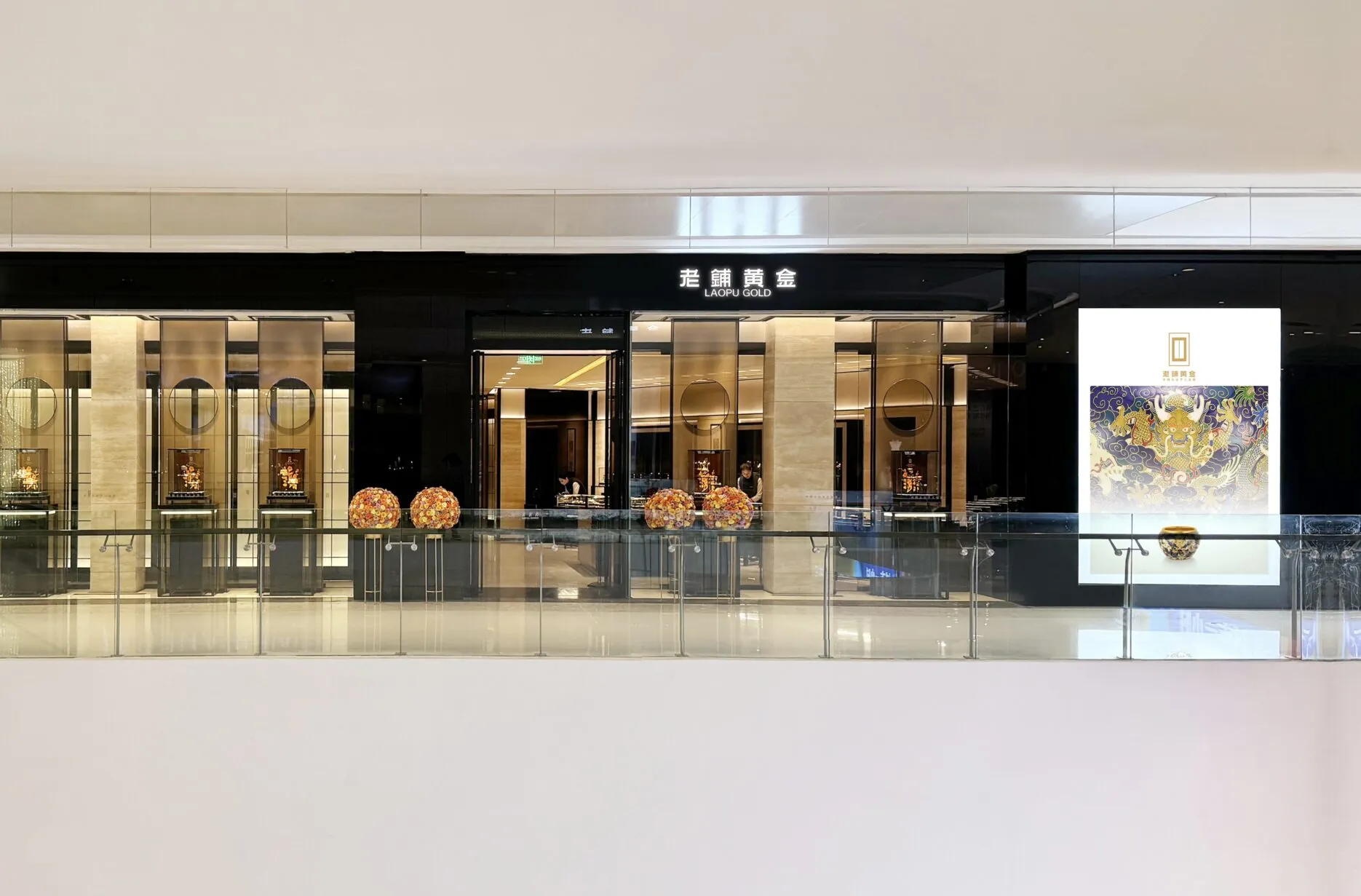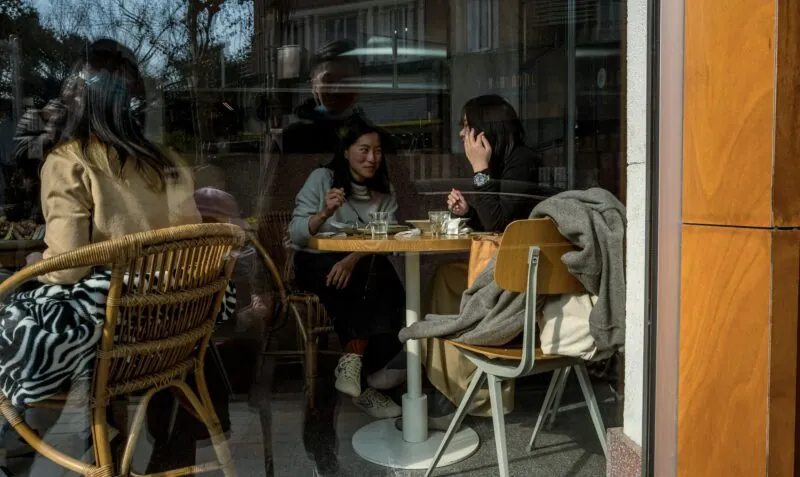On 28 June, Beijing-based Chinese gold shop/jeweller Laopu Gold (老铺黄金, lit. Old Shop Gold) went public via IPO on the Hong Kong Stock Exchange. The IPO raised over 700 million HKD (89.62 million USD) with the highest share price growing over 80% on the first day. The value of the company grew by over 5 billion HKD (640.10 million USD) in one day. The news came a little over 6 months after the gold shop submitted its Prospectus in Hong Kong.

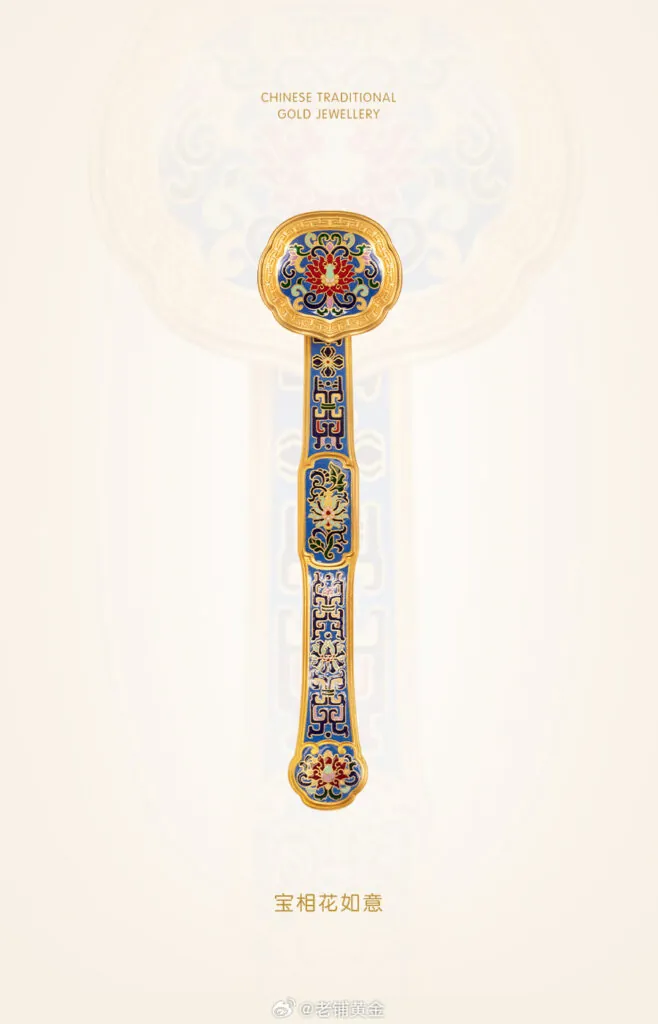
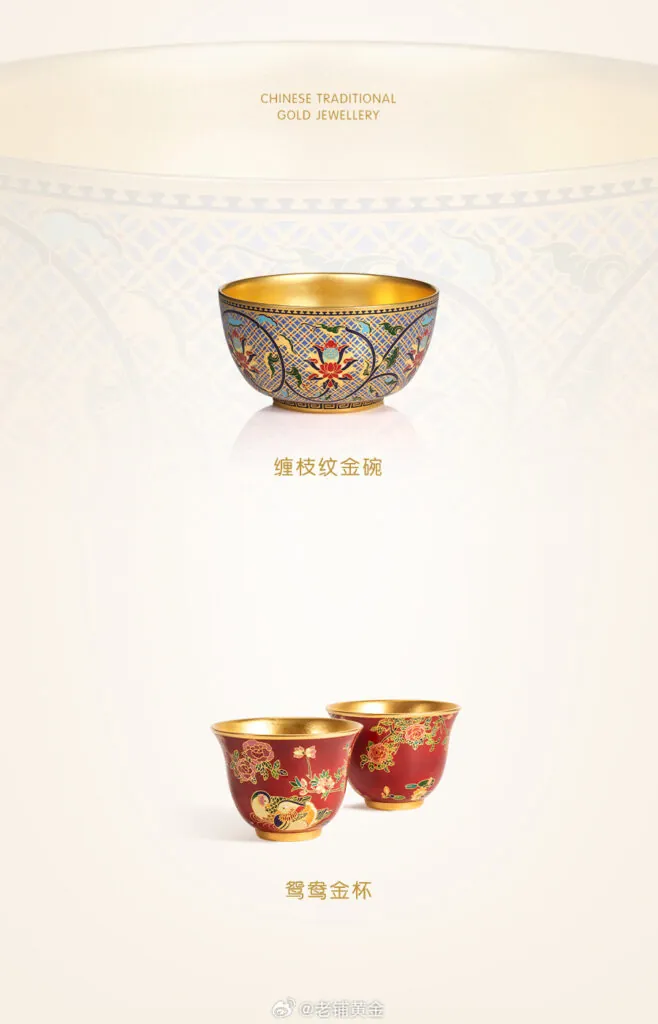
Laopu Gold currently only has 33 shops across China. But with these shops, the brand earned 3.18 billion RMB (437.41 million USD) in revenue in 2023. Profit last year was 416 million RMB (57.22 million USD), making the gross margin a whopping 41.9%. For comparison, Hong Kong-based Chow Tai Fook’s (周大福) gross margin in 2023 was 22.36%, Shenzhen-based Chow Tai Seng’s (周大生) was 18.14% and the Shanghai-based Lao Feng Xiang (老凤祥) was 8.3%. So, who is Laopu Gold?
Old craftsmanship?
Started by Xu Gaoming in 2009 as a shop selling traditionally crafted goldware, and established as a brand in 2016, Laopu isn’t an old shop after all. However, the old is in its manufactural techniques. Since its early days, the brand has been known for its “traditionally crafted”, or old Chinese craftsmanship gold (古法黄金) jewellery.
Since its early days, the brand has been known for its “traditionally crafted” gold jewellery
The “traditional craftsmanship” in gold started around 2017 when Chow Tai Fook launched its Huá collection, focusing on traditional handcrafted jewellery. But it didn’t take off because it was too expensive. In 2019, with a new wave of guochao on the rise, jewellers such as Chow Tai Fook began to market the ancient technique heavily. The market share of “traditionally crafted” gold grew from 6% to 16% between 2018 and 2020. Chow Tai Fook’s investment paid off as Huá steadily contributed 40% of its sales between H1 FY2021 to H1 FY2024.
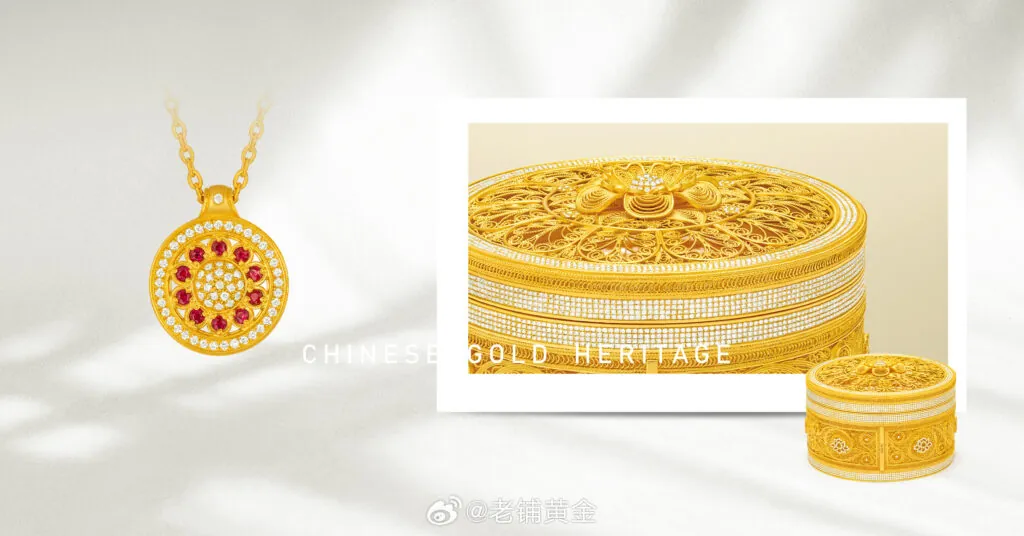
The trend exploded in 2023 with the guochao 3.0 wave, spearheaded by the New Chinese Style fashion. Data shows that women aged between 18 and 55 are the primary gold customers and most buy gold to wear themselves. For this reason, the hefty feel of “old craft” gold is more attractive than the current “3D” gold jewellery.
Hermès of Gold
The secret to Laopu maintaining its gross margin above 40% in the past 3 years in an industry with an average gross margin between 8% and 20% is quite simple. But we need to go back to how the traditional Chinese gold shop operates. Traditional gold shops charge by the weight of gold used, plus charge for the workmanship and other costs. Therefore, Chinese consumers are very aware of the gold price and its rise this year.
However, Laopu, despite its name, operates completely differently. It has set prices on its jewellery pieces, similar to a luxury jewellers. By not selling by the gram, no franchising options, only directly operated stores, and no low carat gold, only “old craft” pure gold, the brand has been dubbed the “Hermès of Gold”.
After the gold rush
Online opinions on the brand are polar opposites: some find it has no value for money, while others think they are a huge bang for their buck. The reason is, of course, who they compare Laopu with. Many of Laopu’s clientele are luxury shoppers who frequent the likes of Chanel and Miu Miu. For them, compared with Van Cleef & Arpels and Buccellati, Laopu’s pricing is a bargain. With the economic headwinds and need for investment, plus the influence of guochao and love for traditional Chinese aesthetics, Chinese luxury consumers have become re-enamoured with pure yellow gold.
However, the pricing is still high for those who are used to dividing the total price of jewellery by the gram and finding which one has the lowest price of gold per gram. This can in turn limit the future expansion of Laopu. For offline retail businesses, steady expansion is still key to growth. Compared to Chow Tai Fook’s 7,782 stores and Chow Tai Seng’s 5,129, Lapou’s planned 50 stores have limited its sales. Indeed, Lao Feng Xiao, who had 5,994 shops by the end of 2023, had a revenue of 71.4 billion RMB (9.82 billion USD), 24 times of Laopu’s.
Since much of its assets are in unsold goods, its cash flow might not be able to support aggressive expansions
Laopu still faces stiff competition. Since much of its assets are in unsold goods (however it did pause pre-order to deal with supply issues this May), its cash flow might not be able to support aggressive expansions. However, with its shares still growing healthily in Hong Kong, Laopu might just be able to establish itself as one of the major players in the Chinese jewellery market or become one of its first luxury brands.




